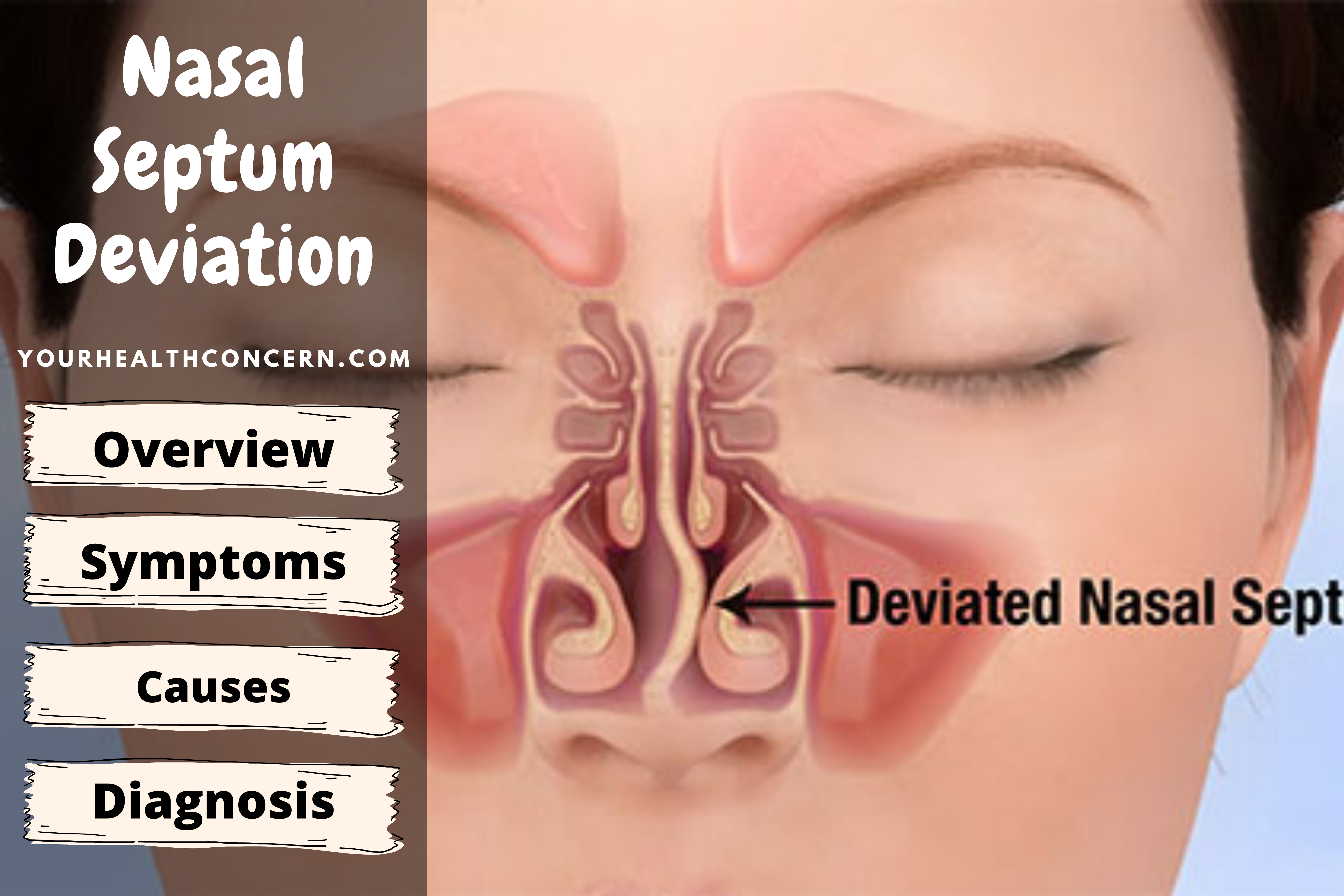Nasal Septum Deviation | symptoms, causes, and treatment
The bone and the cartilage that divide the internal nose into two parts make the nasal septum.
A mucous layer with many veins covers the bone and tendon covered by outstanding skin.
Ideally, the left and right nasal ways are identical in size.
Evaluations show that upwards of 80% of people have a nasal septum deviation which could cause many side effects.
What is a deviated septum?
A deviated septum is a condition wherein the nasal septum – – the bone and tendon that segment the nasal pit of the nose in half – – is skewed, making breathing irksome.
Most have an imbalance in the size of breathing passages.
A disproportionate septum is uncommonly typical. Measures show that 80% of people, most accidentally, have a misalignment to their nasal septum or the like.
A deviated septum requires clinical thought that creates other clinical issues or unfavorably impacts individual fulfillment.
What happens in Nasal Septum Deviation?
When a deviated septum is outrageous, it can hinder one side of the nose and decline wind current, creating problems unwinding.
The transparency of a deviated septum to the drying effect of wind stream through the nose may add to crusting or depleting in unambiguous people.
A nasal blockage or stop-up (check) can occur from a deviated nasal septum, the expansion of the tissues covering the nose, or both.
Symptoms
Most septal migrations achieve no side effects, and you may not understand you have a deviated septum. A couple of septal disfigurements, in any case, may cause the going with signs and side effects:
1. Impediment of one of the two nostrils
This blockage can make it difficult to breathe through the nostril or nostrils. You could see this more when you have a cold or responsive quality that can make your nasal passages swell and restricted.
2. Nosebleeds
The external layer of your nasal septum could become dry, extending your bet of nosebleeds.
3. Facial torture
There is some conversation about the possible nasal explanations behind facial torture. An expected justification for lopsided facial torture could be a super deviated septum, in which surfaces inside the nose contact and cause pressure.
4. Noisy breathing during rest
A deviated septum or growing of the tissues in your nose can be one of the many purposes behind noisy breathing during rest.
5. Awareness of the nasal cycle
The nose switches to and fro between being obstructed on one side. It is known as the nasal cycle. Observing the nasal cycle is not ordinary and can show nasal checks.
6. A tendency to rest on a particular side
Certain people could get a kick out of the chance to lay on a particular side to work on breathing through the nose around nighttime if one nasal passage is restricted.
Causes behind nasal septum deviation
An actual issue to the nose can cause a deviated septum. Nasal injuries could occur due to:
- Sports.
- Falls.
- Car accidents.
- Get a hit in the nose during a disaster or fight.
A deviated septum may be natural or present after entering the world. The deviation may be from birth or connective tissue contamination.
It could similarly be a result of a run-of-the-mill new development. As the nose grows, the septum also grows and can often create towards one side. It is commonly the typical reason to have a deviated septum.
When I could see my doctor?
See your clinical consideration provider if you experience issues in breathing or side effects that impact your fulfillment. They can play out a test to conclude whether you have a deviated septum and, given that this is valid, how outrageous it is.
Diagnosis
A clinical benefits provider will begin by asking questions about your side effects.
They will do a genuine test, including a close evaluation of your nose, and will look past your nose.
Doctors also look inside your nose by shining a breathtaking light into your nose.
You could see a prepared proficient, like an ear, nose, and throat (ENT) clinical consideration provider or a plastic subject matter expert.
How is a Nasal Septum Deviation Treated?
In most cases, nasal septum deviation does not need treatment.
For a deviated septum, an operation is the ordinary treatment decision. Due to the costs, bets, or various factors, certain people with a deviated septum choose not to go through an operation. Other treatment decisions are available. They don’t decide on a deviated septum, but they can reduce the side effects that go with it.
Treatment revolves around curing that issue. Ordinary meds for side effects include:
- decongestants
- anti-histamines
- nasal steroid sprinkle
- nasal strips
Surgery
your doctor proposes surgery (septoplasty) if your symptoms don’t improve with a drug or other therapy.
Arrangement
To prepare, you should make an effort not to take prescriptions, for instance, cerebral pain medication or ibuprofen, when the operation. These prescriptions could construct your bet of kicking the bucket. You stop smoking, as it can deter patching.
Process
Septoplasty expects something like 90 minutes and is under sedation. You get general or local anesthesia depending on the subject matter expert and your specific case.
An expert cuts the septum and takes excess tendon or bone during the procedure. It fixes the septum and your nasal segment. Silicone supports may be implanted in each nostril to help the septum. Then, at that point, the section point wound is closed with a join.
Complications
Doctors will monitor you after the operation for complexities, and you’ll most likely have the choice to get back that very day. Septoplasty is a safeguarded framework for most who can go under sedation.
Tips after septoplasty
During recovery from septoplasty, your essential consideration expert could give you medicines.
Taking it can diminish your bet of post-activity defilement or help supervise torture or misery. You have to take all of the medications your PCP suggests.
After the technique, you can help recover by following these tips:
- Make an effort not to clear out your nose.
- Raise your head while you’re resting.
- Avoid depleting action, including cardio.
- Wear articles of clothing that attach to the front rather than pulling them over your head.
Risk Factors
If left untreated, a deviated septum can cause intricacies. Commonplace trouble is the deterrent of one of the two nostrils. It can cause:
- changing of nose shape
- assurance in issues even after the operation
- super biting the dust
- a lessened sensation of smell
- temporary deadness in upper gums and teeth
- septal hematoma (mass of blood)
Various Intricacies include:
- nosebleeds
- facial torture
- dry mouth
- upset rest
- strain or stop up in the nasal passages
Preventions
Certain people are into the world with a deviated septum.
If you don’t have a deviated septum after entering the world, you can take the necessary steps to diminish your bet of injury. You can protect your nose by:
- Using a facial covering or cap during sports.
- Wearing your seat strap.
- Avoiding high-actual games.
Final Words
A deviated septum happens when your nasal septum — the modest wall that segregates your right and left nasal segments — is removed aside. A deviated septum could cause breathing issues, blockage, headaches, apnea, wheezing, obstruction, illnesses, or nosebleeds.
A deviated septum may not welcome any issues and may not require treatment. On occasion, a deviated septum can incite various snares. Outrageous cases could require an operation. Expecting you have a deviated septum that could require treatment, inspect your decisions with your PCP.

